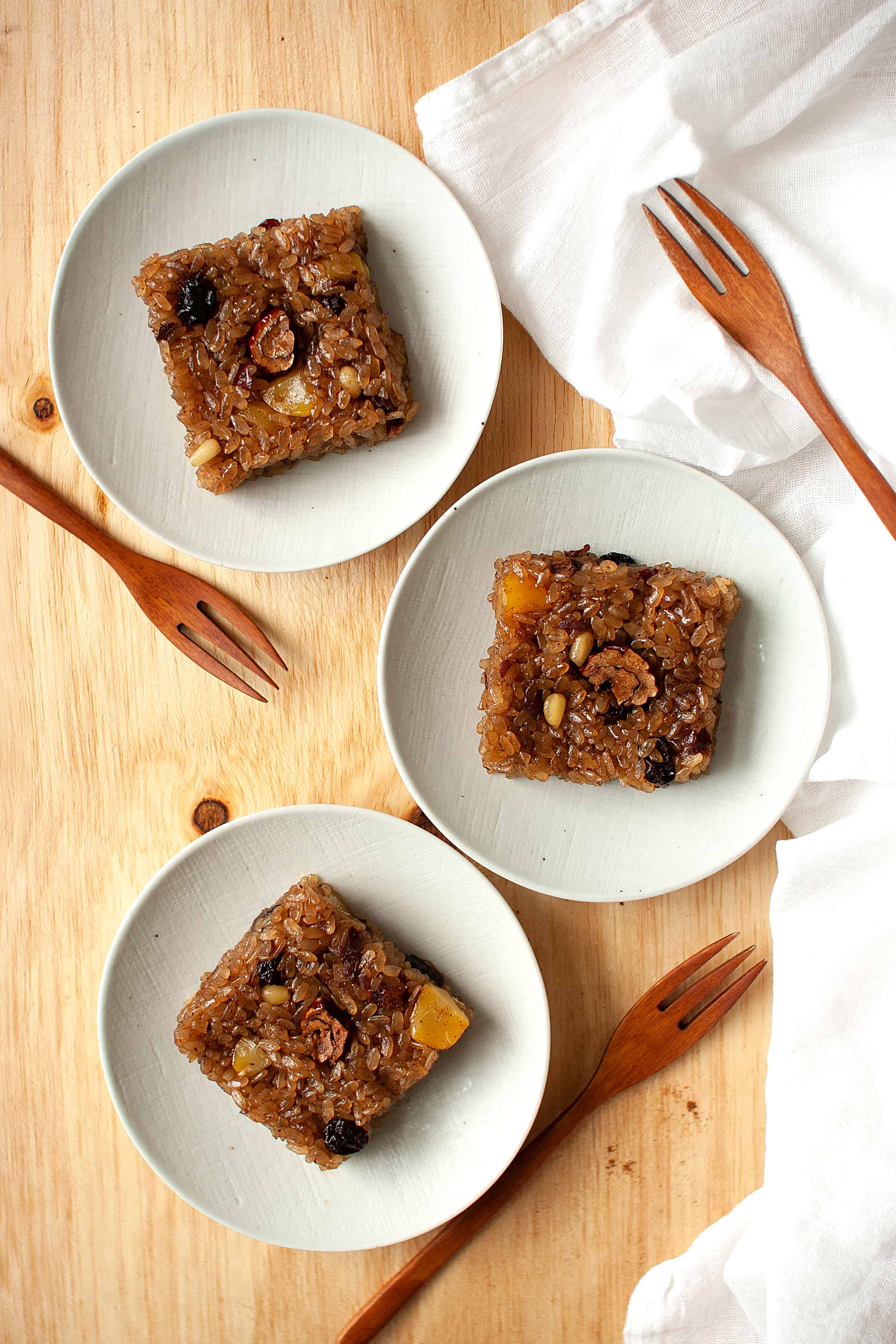
It may come as a surprise, but my favorite type of dessert is the Korean rice cake. Don’t get me wrong, there’s nothing like a thick slice of chocolate cake, and I’m a sucker for shortbread cookies, but if rice cakes are on the table, that’s what I’m going for (first).
Like so many other Koreans, ddeok or rice cakes were a big part of my childhood, which is probably why I love them so much. We had them for breakfast, as a snack, in savory dishes, for dessert, and during any major holiday or celebration. There are so many varieties to choose from, but this version, yaksik or Korean sweet rice dessert, is one of my all-time favorites.
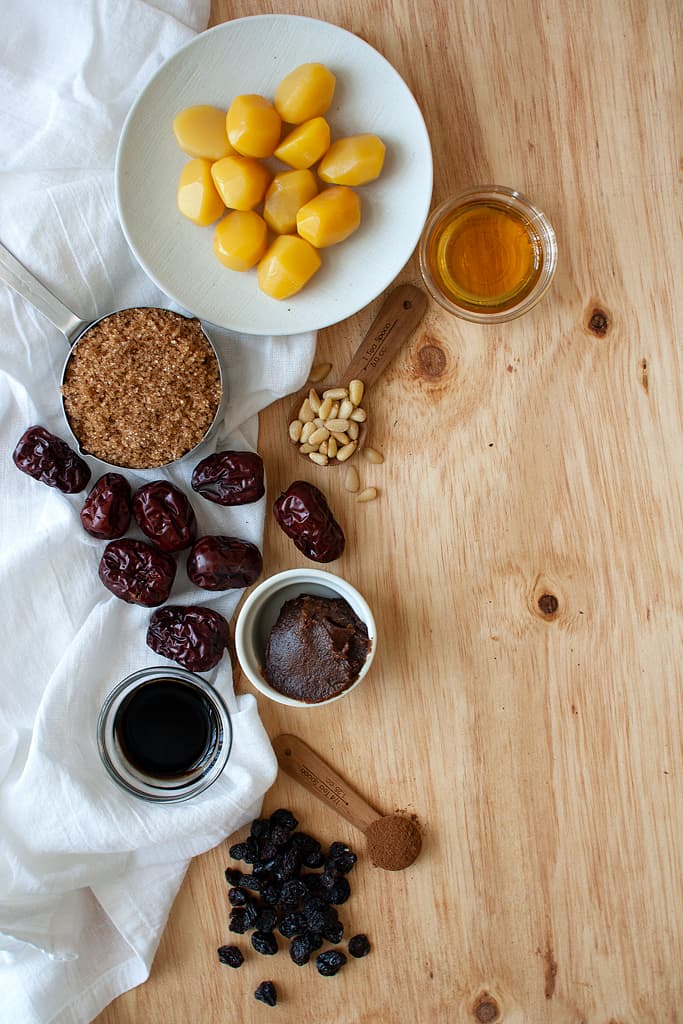
Yaksik is made with sweet rice that’s mixed with dried fruits and nuts. It’s seasoned with honey, brown sugar, soy sauce, sesame oil, and cinnamon. The combination of ingredients may cause some head-scratching (soy sauce + cinnamon?), but trust me, it works. All those elements come together to create a deep caramel-y flavor with subtle hints of nuttiness and spice. When made well, each kernel of rice is distinct and has a brilliant brown topaz hue.
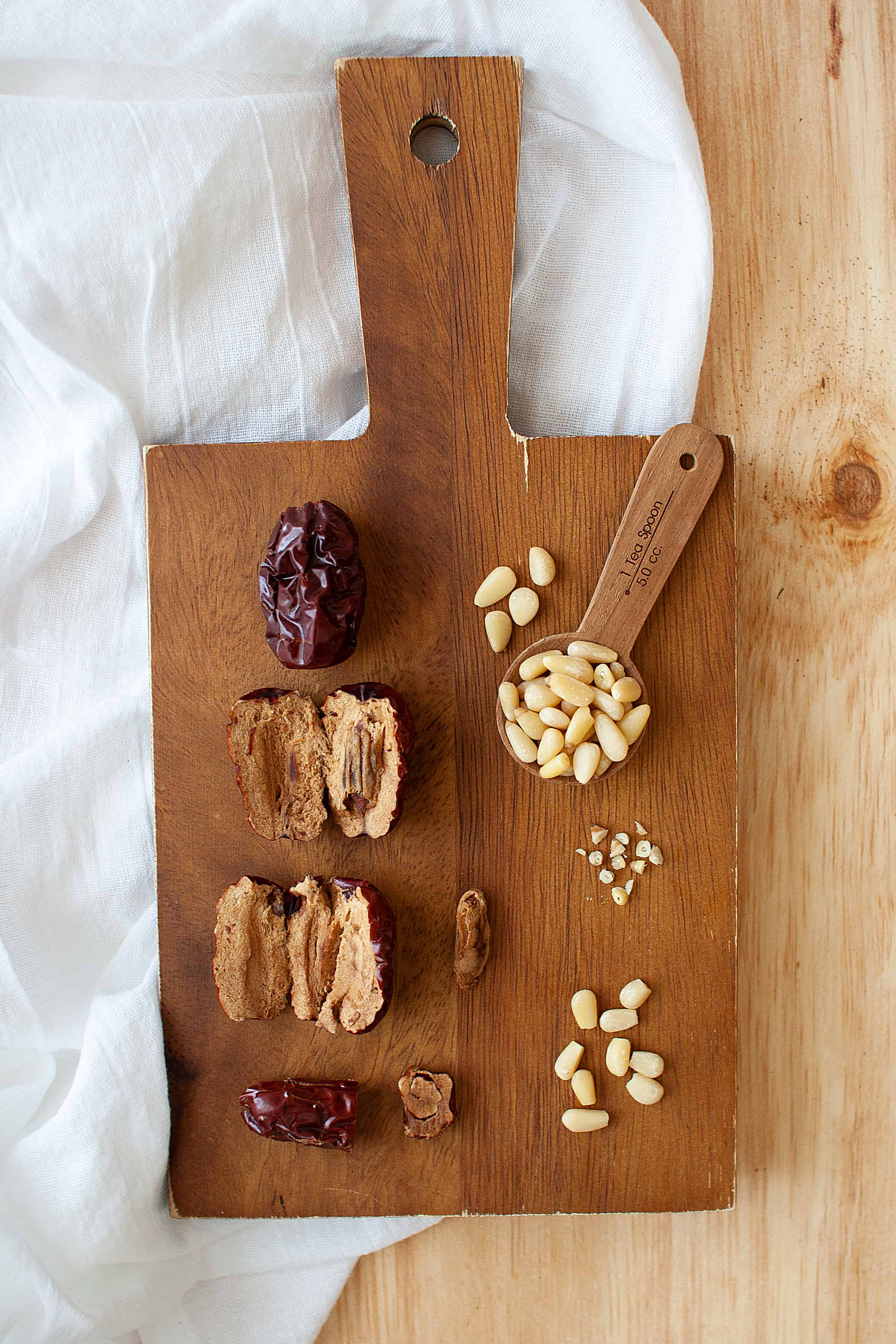
The two key ingredients in yaksik are sweet rice and jujubes. Sweet rice, also known as glutinous or sticky rice, is a type of short-grain rice that has a very “sticky” consistency when cooked. Despite its chew, sweet rice does not contain any gluten. Its taste profile is slightly sweet, which is why they’re often found in desserts.
Jujubes, also known as red dates or Chinese dates, are a small, ovular fruit that has an apple-like texture and taste when eaten fresh. In Korea, they’re dried and used in many types of dishes, including savory ones. Jujubes are sweet, like medjool dates, but they possess a distinct woody-herbal flavor. The dried versions are also not as sticky as the dates we’re familiar with over here in the US.
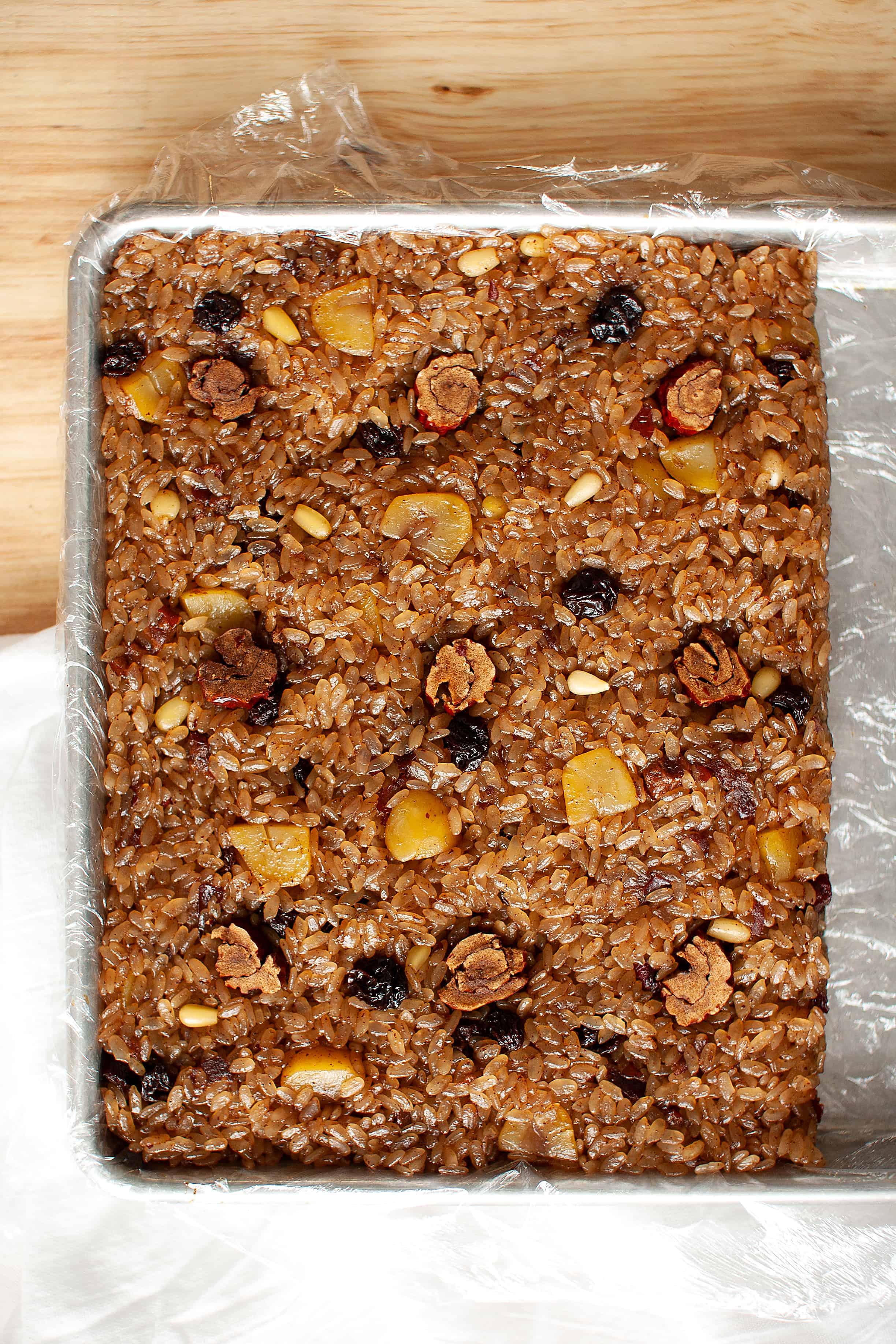
In Korea, yaksik is eaten year-round, but officially it’s the celebratory dish that’s eaten on the first full moon of the Lunar New Year (FYI that takes place on February 8th in 2020). Legend has it that 1,500 years ago a crow saved a king’s life by warning him of danger. As an act of gratitude, the king ordered his people to pay thanks to the crows by offering them sweet rice cooked with chestnuts and jujubes–foods that birds like–on the first full moon of every year. I don’t know anyone who practices this rite today, but I’m grateful for the crow and the delicious dish that resulted from this story.
It’s not quite Lunar New Year yet, but the flavors of yaksik are so cozy that I feel like the beginning of fall is a great time to make this. Also, it happens to be Korean Thanksgiving, Chuseok, this week, and so for those of you celebrating, this would be a great dish to make!
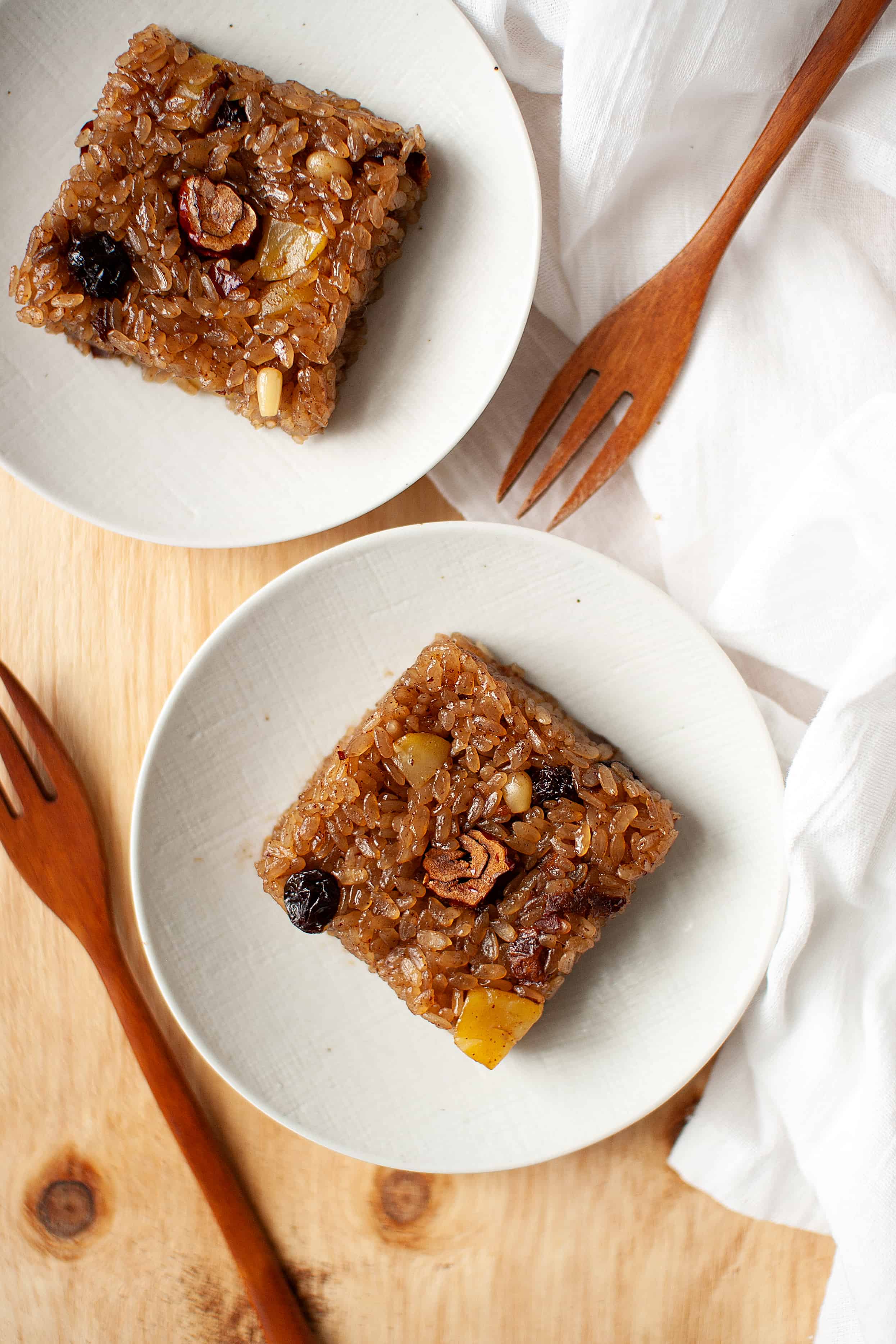
My recipe for yaksik follows the traditional method of steaming instead of cooking in a rice cooker. It takes a little more time—and a few more steps–but is totally worth the effort. The soaking, steaming, and resting may sound daunting, but the techniques involved are actually quite simple. I’d say the hardest part of this dish is making the jujube paste, which isn’t very difficult but requires a little elbow grease 💪.
More sweet Korean recipes:
Sweet Korean Pancakes, Hotteok, 호떡
Soboro Bread, Korean Peanut Streusel Bread, 소보롱빵

Korean Sweet Rice Dessert, Yaksik
- Prep Time: 45 min
- Cook Time: 45 min
- Total Time: 1 hour 30 min + soaking/marinating time
- Yield: 10 Servings
- Category: Dessert
- Method: Steaming
- Cuisine: Korean
Description
A sticky rice dessert with dried fruits and nuts. It has a deep caramel-y flavor with subtle hints of nuttiness and spice.
Ingredients
2 cups (400g) sweet rice (see notes)
6–7 chestnuts, peeled and cut into quarters (see notes)
6–7 dried jujubes (see notes)
2 teaspoons (8g) pine nuts
1/2 cup (90g) light brown sugar
2 teaspoons (12g) sesame oil
1 1/2 teaspoons (12g) soy sauce
1 1/2 tablespoons (40g) jujube paste (recipe below)
1 1/2 tablespoons (30g) honey
1/2 teaspoon (1g) cinnamon
2 tablespoons (30g) raisins
Jujube Paste
10 dried jujubes
Instructions
1. Wash the sweet rice and soak in a generous amount of water for at least 5 hours or overnight.
2. Drain the sweet rice well. Pour 6-7 cups of water into a deep pot. Depending on what type of steamer basket you have, place it inside or on top of the pot. Line the basket with a wet cheesecloth or muslin and let the excess cloth hang over the edge of the steamer pot. Place the sweet rice inside the basket and on top of the cheesecloth. If using fresh chestnuts, mix them into the rice. Cover the sweet rice with the excess cloth. The rice should be bundled inside the steamer basket. Cover the pot with its lid, and place over high heat. Set a timer for 30-35 minutes. When steam starts to release vigorously through the sides of the lid, about 7-10 minutes later, reduce heat to medium.
3. Meanwhile remove the seeds of the jujubes and cut into swirls (see image above) or into 1/4 inch (1/2 cm) slivers. Reserve a few pieces to use as decoration. If desired, cut the brown tips off the pine nuts. Set aside.
4. When the sweet rice has finished cooking for 30-35 minutes, transfer to a large bowl. While still hot, add the brown sugar. Using a wooden spatula, mix well. Make sure the brown sugar melts and evenly coats each grain of rice. Add the sesame oil, soy sauce, jujube paste, honey, and cinnamon, and mix until thoroughly combined. Fold in the prepared jujubes, pine nuts, and raisins. If using canned chestnuts, add them now. Cover with plastic wrap and leave at room temperature for at 1-2 hours (see notes).
5. Add 1-2 cups of water to the pot, and place everything back into the steamer basket lined with cloth. Wrap the edges of the cloth over the top of the rice like before. Place over high heat and set a timer for 15-20 minutes.
6. Meanwhile, line a quarter sheet pan or 8×8 inch baking pan with plastic wrap.
7. When the rice has finished cooking for 15-20 minutes, remove from heat and place inside the prepared quarter sheet pan or baking pan. Press the mixture down firmly to make sure everything sticks together. Decorate with the reserved jujube pieces. Let cool for about 15 minutes.
8. Once cooled, flip the pan over onto a cutting board and cut into desired shapes and sizes using a knife or cookie cutter brushed with oil to prevent sticking.
9. Eat immediately or wrap individual portions tightly in plastic wrap. Store in the refrigerator for 1 week or the freezer for up to 6 months. To reheat, remove from plastic wrap and steam or microwave.
Jujube Paste
1. Place the dried jujubes in a small pot with 1-2 cups water. Bring to a boil, cover, then turn off heat. Steap for 5 minutes.
2. Drain the water. When cool enough to handle, remove the seeds and place the meat into a small food processor. Make sure to scrape all the meat from the seeds. Process until finely chopped, then pass through a sieve. Use immediately or place in an airtight container in the refrigerator for up to 1 week.
Notes
Sweet rice is also known as glutinous or sticky rice and can commonly be found at Asian supermarkets.
If chestnuts are not in season, look for canned or vacuum packed chestnuts at Korean grocery stores.
If pressed for time, move ahead with the second steam right away. The seasonings will not have marinated fully, but the flavors will still be good.
Keywords: Yaksik, Korean Sweet Rice Dessert, Jujubes

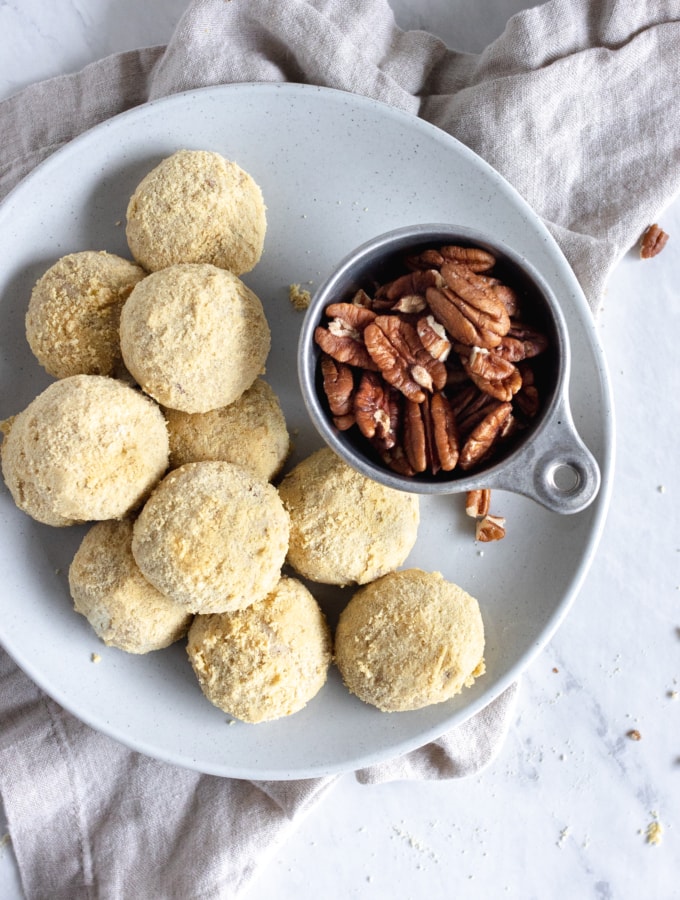
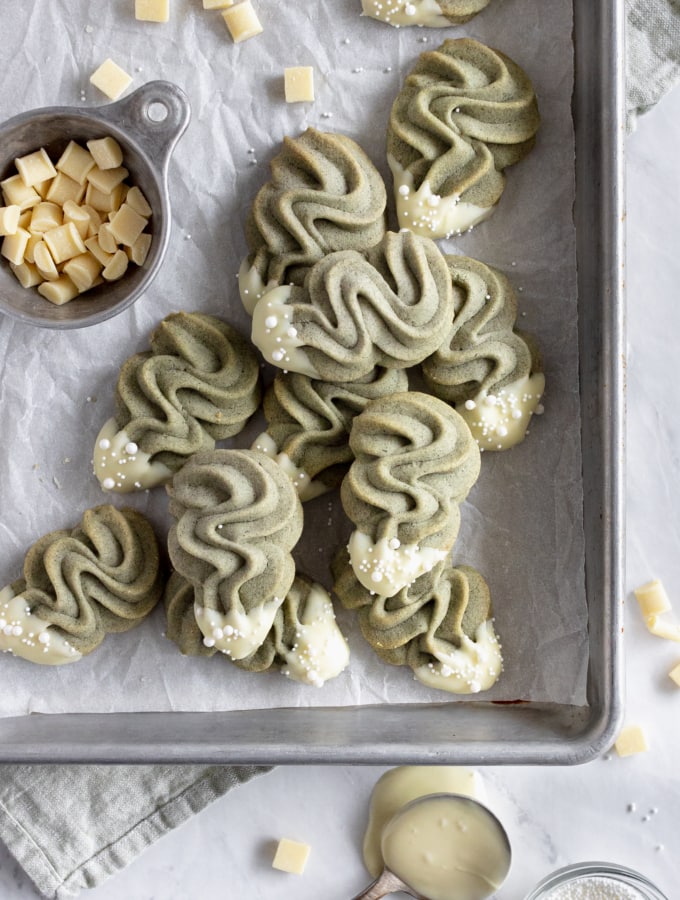
Michelle says
The taste of yaksik is so hard to describe! This recipe was yummy!
★★★★★
Jessica says
Michelle- Thank you!! I’m so glad you liked it 🙂
Sakshi says
Delicious Recipe!! Can we use normal rice to make this recipe instead of sweet rice?
★★★★★
Jessica says
Sakshi- Great question! Unfortunately, you cannot substitute regular rice for sweet rice. Sweet rice, also known as glutinous rice, has a completely different texture from regular rice, and so substituting one for the other will result in an entirely different texture.